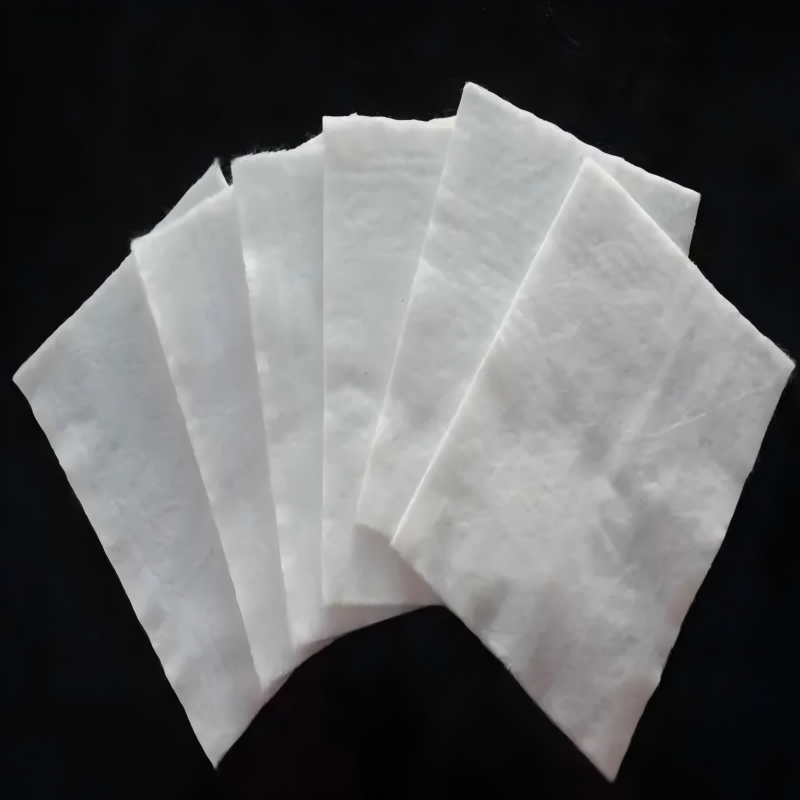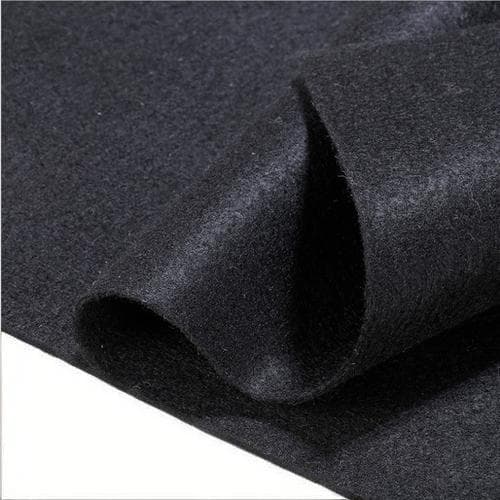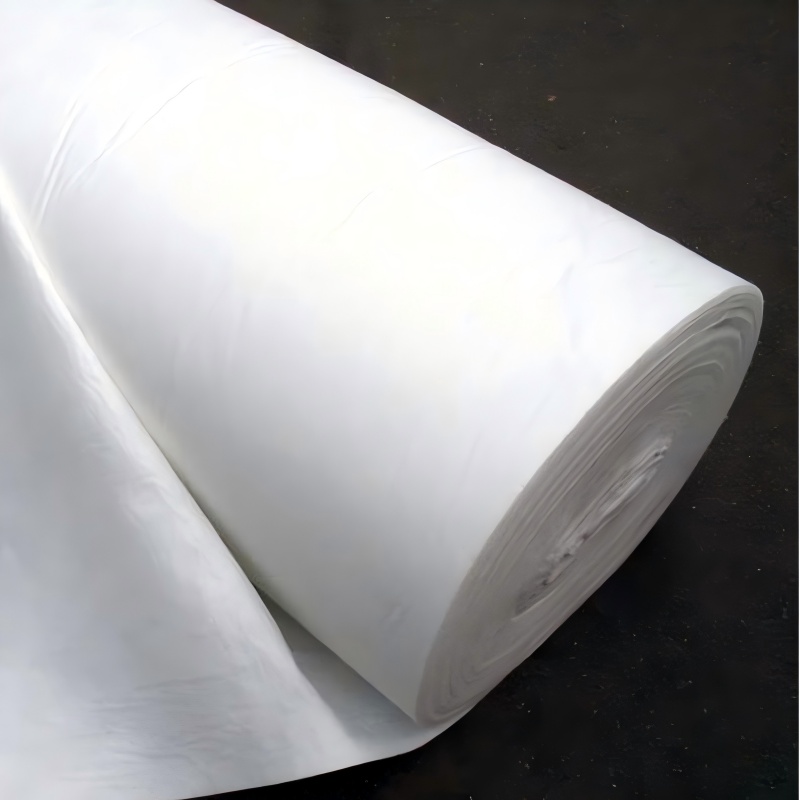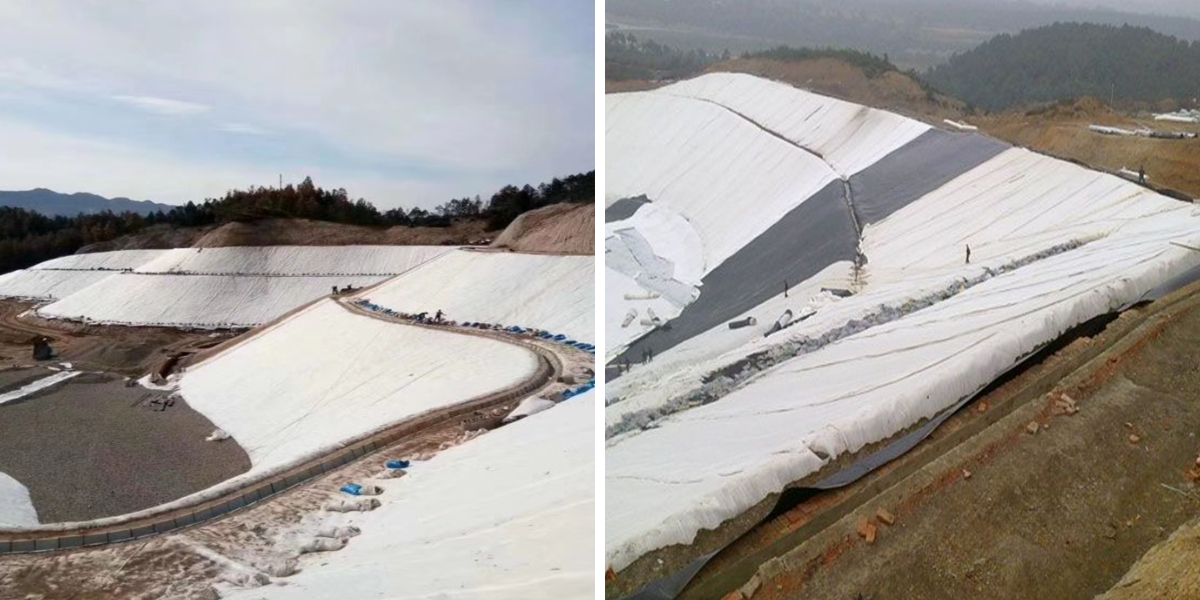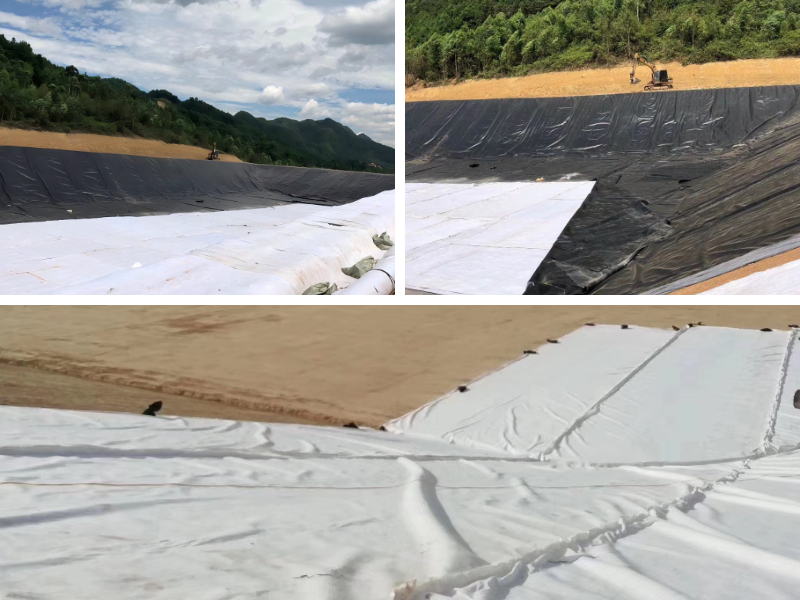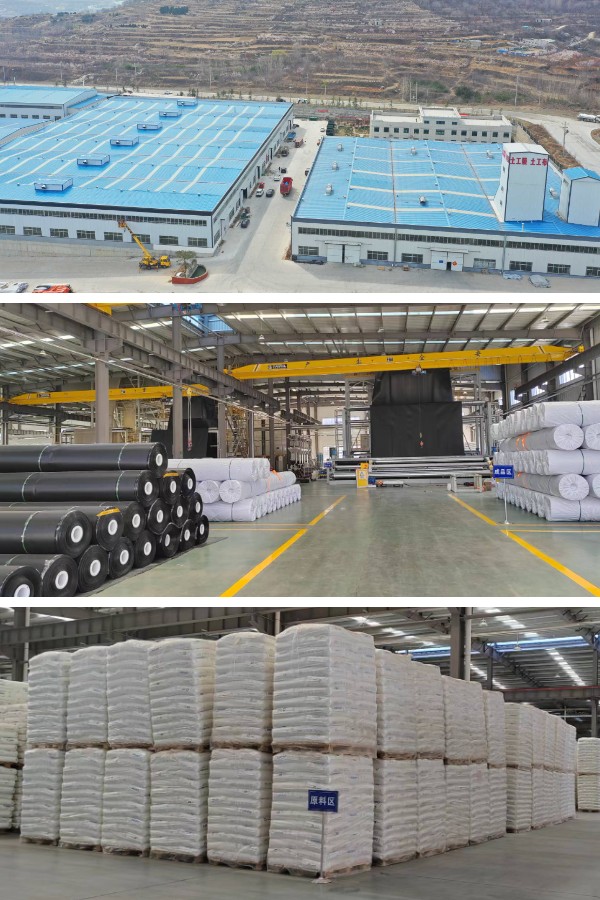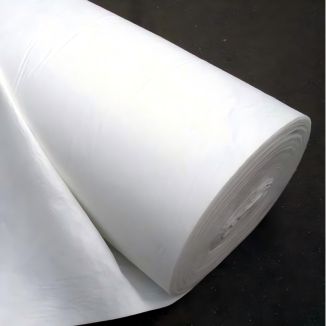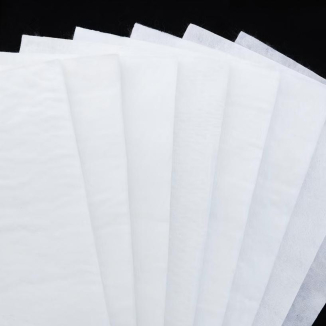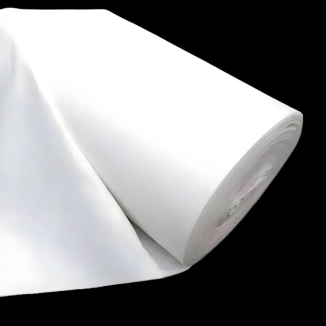Heavy Gauge Woven Geotextile
1. Super tensile strength: high-density woven structure, high longitudinal and transverse fracture strength, tensile and tear resistance, suitable for heavy-duty reinforcement scenarios
2. Wear resistant and durable: The thick fabric texture is resistant to mechanical crushing, friction, and external impact, and is not easily damaged after long-term use
3. Stable weather resistance: resistant to ultraviolet radiation, acid and alkali corrosion, stable performance in extreme temperature and humidity environments, and long service life
4. Accurate isolation: uniform and controllable aperture, efficient interception of fine particles to prevent mixing, ensuring the independence and stability of the structural layer
Products Introduction:
Heavy Gauge Woven Geotextile is a type of thick and heavy-duty functional geosynthetic material made from high-strength polyester (PET) or polypropylene (PP) filaments through precision weaving processes. Its core positioning is "structural stability barrier under heavy loads and harsh environments". Its weight is usually between 300-1000g/m ². With high-density woven structure and high modulus fiber characteristics, it focuses on the three core functions of "high-strength reinforcement, precise isolation, and wear resistance". It is mainly used in civil engineering scenarios that can withstand heavy loads and resist complex environmental erosion, such as heavy-duty roads, mining yards, dam reinforcement, etc.
Product Features:
1. Ultra high mechanical strength, suitable for heavy-duty reinforcement
Using high modulus filament raw materials and dense weaving technology, the longitudinal and transverse fracture strength can reach 50-150kN/m, and the tear resistance strength is ≥ 5kN, far exceeding ordinary geotextiles (conventional woven geotextiles have a strength of ≤ 30kN/m); Excellent creep resistance, with a deformation rate of ≤ 2% under long-term constant heavy loads (such as mining trucks and container yards), can effectively disperse local stress, prevent settlement and collapse caused by soil and road gene load concentration, and adapt to high-strength stress scenarios such as heavy-duty roads and port yards.
2. Wear resistant and impact resistant, able to withstand harsh construction and use
The surface of the fabric presents a tight and thick woven texture, with a wear resistance of up to 1000 Martindale abrasion tests without obvious damage. It can resist severe external impacts such as heavy roller compaction, gravel laying friction, and engineering equipment dragging; The edges are treated with special locking to avoid fiber detachment caused by pulling during construction. Even in rough construction environments such as mines and infrastructure, the structural integrity can be maintained, reducing rework caused by material damage.
3. Precise isolation to ensure independent and stable structural layers
By precisely controlling the machine aperture (0.1-0.5mm), the interception rate of soil fine particles, sand and gravel micro materials is ≥ 99%, which can strictly separate soil materials, sand and gravel or subgrade layers of different grades, prevent interlayer particle migration and mixing - for example, in heavy-duty roadbeds, it can isolate the roadbed soil from the graded gravel layer, avoid fine soil blocking the gravel holes and causing drainage failure, and prevent gravel from embedding in soft soil and reducing bearing performance, ensuring the independent and stable function of each structural layer.
4. Weather resistant and corrosion-resistant, suitable for complex and extreme environments
The raw materials have undergone triple stabilization treatment with UV resistance, acid and alkali resistance, and microbial resistance, and can work stably in the extreme temperature range of -40 ℃ to 90 ℃. They are resistant to saline alkali soil, seawater immersion, industrial wastewater erosion, and outdoor strong sunlight aging; In complex environments such as coastal ports, saline alkali mines, and chemical industrial parks, the service life can reach 15-25 years, far exceeding that of ordinary geotextiles (5-10 years), significantly reducing maintenance and replacement costs in the later stage.
5. Stable structure, compatible with multiple construction processes
The fabric has a tight structure and good dimensional stability, with a thermal shrinkage rate of ≤ 1% (2 hours at 100 ℃), and is not easily wrinkled or shrunk due to temperature changes after laying; Compatible with subsequent construction processes such as asphalt paving, concrete pouring, and crushed stone compaction - the high temperature resistance (≤ 180 ℃) ensures that the asphalt does not melt or deform during paving, the high-strength characteristics withstand concrete vibration impact, and are suitable for composite engineering requirements such as "reinforcement+paving" and "reinforcement+protection".
Product Parameters:
project | metric | ||||||||||
Nominal strength/(kN/m) | |||||||||||
6 | 9 | 12 | 18 | 24 | 30 | 36 | 48 | 54 | |||
1 | Longitudinal and transverse tensile strength / (kN/m) ≥ | 6 | 9 | 12 | 18 | 24 | 30 | 36 | 48 | 54 | |
2 | Maximum elongation at maximum load in longitudinal and transverse directions/% | 30~80 | |||||||||
3 | CBR top penetration strength /kN ≥ | 0.9 | 1.6 | 1.9 | 2.9 | 3.9 | 5.3 | 6.4 | 7.9 | 8.5 | |
4 | Longitudinal and transverse tearing strength /kN | 0.15 | 0.22 | 0.29 | 0.43 | 0.57 | 0.71 | 0.83 | 1.1 | 1.25 | |
5 | Equivalent aperture O.90(O95)/mm | 0.05~0.30 | |||||||||
6 | Vertical permeability coefficient/(cm/s) | K× (10-¹~10-), where K=1.0~9.9 | |||||||||
7 | Width deviation rate /% ≥ | -0.5 | |||||||||
8 | Unit area mass deviation rate /% ≥ | -5 | |||||||||
9 | Thickness deviation rate /% ≥ | -10 | |||||||||
10 | Thickness coefficient of variation (CV)/% ≤ | 10 | |||||||||
11 | Dynamic perforation | Puncture hole diameter/mm ≤ | 37 | 33 | 27 | 20 | 17 | 14 | 11 | 9 | 7 |
12 | Longitudinal and transverse fracture strength (grab method)/kN ≥ | 0.3 | 0.5 | 0.7 | 1.1 | 1.4 | 1.9 | 2.4 | 3 | 3.5 | |
13 | Ultraviolet resistance (Xenon arc lamp method) | Longitudinal and transverse strength retention rate% ≥ | 70 | ||||||||
14 | Ultraviolet resistance (fluorescence UV lamp method) | Longitudinal and transverse strength retention rate% ≥ | 80 | ||||||||
Product Applications:
1. Heavy load transportation and port engineering
Heavy duty highway/railway subgrade: laid between the soft soil layer of the subgrade and the graded crushed stone cushion layer, reinforced and stabilized to resist long-term heavy load rolling of trucks and trains, prevent pavement cracking and track deformation caused by subgrade settlement, and adapt to projects such as highway freight channels and heavy-duty railway dedicated lines.
Port/container yard: Lay between the gravel base and the backfill soil foundation to enhance the bearing capacity of the foundation, withstand frequent crushing by container trucks (load ≥ 50 tons), avoid ground subsidence of the yard, and adapt to heavy-duty scenarios such as port container terminals and bulk cargo yards.
2. Mining and Energy Engineering
Mine tailings dam body: It is laid between the soil base layer and the anti-seepage layer of the tailings dam body, reinforced and anchored to resist landslides and pipe surges caused by tailings loading and rainwater erosion. At the same time, it isolates fine particles of tailings from the soil of the dam body to prevent soil pollution, and is suitable for safety reinforcement projects of metal and non-metal tailings dams.
Coal/ore storage yard: It is laid between the ground base layer and the gravel cushion layer to enhance the ground's resistance to deformation, withstand the rolling and friction of heavy forklifts and transport vehicles, and prevent the ground from sinking due to material loading. It is suitable for large-scale mining raw material storage yards, thermal power plant coal yards, and other scenarios.
3. Water conservancy and dam engineering
Large scale dam reinforcement: used for the upstream or downstream slopes of reservoirs and river dams, laid between the soil and protective layer of the dam (such as concrete prefabricated blocks, ecological gabions), to reinforce and enhance the overall integrity of the dam, resist dam collapse caused by water flow erosion and water level changes, and adapt to medium-sized reservoir dam and river main dam reinforcement projects.
Ship lock/dock revetment: It is laid between the bank slope base and the protective surface structure of the ship lock and dock, isolating soil and protective surface materials to prevent soil erosion from causing the protective surface structure to loosen. At the same time, it can withstand the impact of ship docking and seawater erosion, and is suitable for inland ship lock and coastal small dock revetment projects.
4. Industrial and municipal heavy-duty scenarios
Heavy load road in industrial park: It is laid between the roadbed and asphalt surface layer of the freight road (load ≥ 30 tons) in the park to enhance the road's ability to resist heavy loads, avoid road damage caused by frequent passage of heavy trucks, and adapt to the internal freight roads of chemical parks and manufacturing plants.
Landfill site of garbage incineration plant: It is laid in layers above the anti-seepage membrane at the bottom of the landfill site or in the garbage landfill area, reinforced and stabilized to resist damage to the anti-seepage membrane caused by garbage loading, while isolating garbage from surrounding soil, reducing pollutant diffusion, and adapting to the pre-treatment landfill area of large garbage incineration plants.
The Heavy Gauge Woven Geotextile, with its core advantages of "ultra-high strength resistance to heavy loads, wear resistance, wear resistance, precise isolation and stable structure, weather resistance, corrosion resistance, and long service life", accurately solves the core pain points of "insufficient structural bearing capacity, easy material damage, and high maintenance costs" in heavy-duty engineering and complex environments. It is a "rigid protection flexible solution" for modern heavy-duty civil engineering.
Compared to traditional heavy-duty reinforcement materials such as concrete cushion layers and thin steel plates, this product not only reduces material costs by 30% -50%, but also improves construction efficiency by 2-3 times due to its flexible and easy to lay characteristics, avoiding the limitations of rigid materials such as "difficult to fit and easy to crack". Its wide application not only promotes the development of heavy-duty engineering towards "lightweight, green, and low-cost" direction, but also provides solid guarantees for the safety and stability of key infrastructure such as mines, ports, and water conservancy through reliable long-term performance. It is the preferred category of geotechnical materials for heavy-duty and harsh environments.


